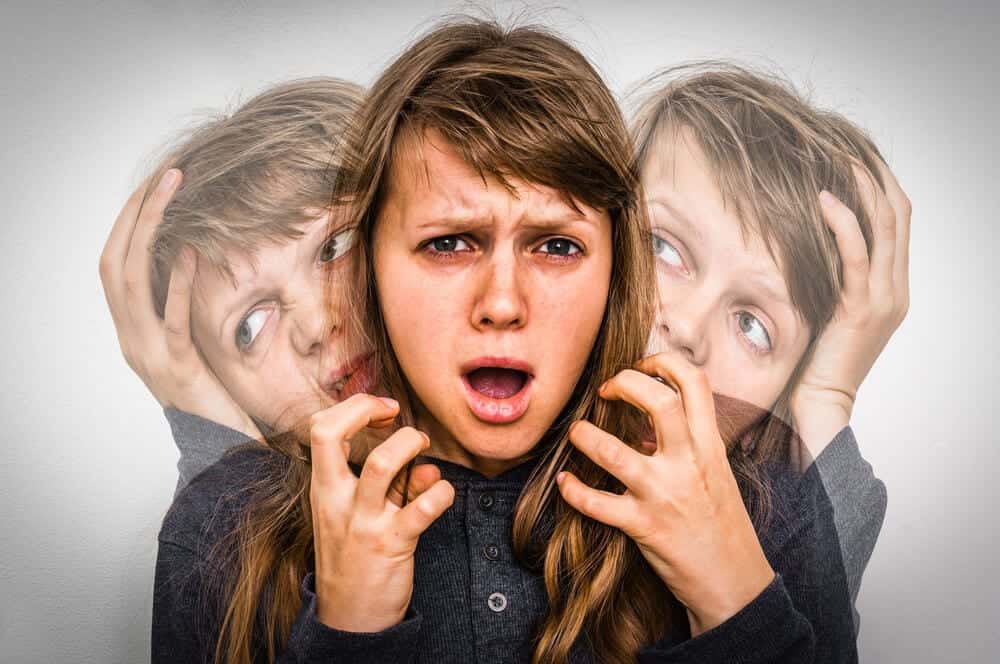
Schizophrenia: Changing Attitudes
In centuries’ past, people did not understand, and maybe still don’t understand, mental illnesses. People in biblical times who may have suffered from mental illnesses like schizophrenia were thought to be possessed by demons or under punishment from God. During the middle ages, people with psychotic features were burned as heretics or witches. In the 17th and 18th centuries, as science became a central opposition to the church, many early scientists and physicians posited the existence of maladies of the brain.
But, even as early as the 19th and 20th centuries, the general public has held a negative stigma of mental illness. People find it difficult to understand how a person cannot simply “shake it off” when depression strikes, or how pills can be of any use if one is crazy. In years past, people with schizophrenia were often institutionalized because they were thought to be dangerous or needed to be isolated from society (or to hide the embarrassment of having a mentally ill family member). Though society no longer treats schizophrenics this way, an idea that simply will not die is that schizophrenics pose a danger to society.
Today, when schizophrenia is mentioned in the news, it is almost always in connection with some alarming crime perpetrated by someone with the condition, such as committing murder because of the voices they heard. These stories simply perpetuate the public impression that patients with schizophrenia are violent and dangerous.
There are undoubtedly violent people who have schizophrenia and other mental illnesses, but these individuals are only a very small part of the mentally ill population. The majority of those with mental illnesses, including schizophrenia, are non-violent people.
Here, in the early 21st century, attitudes about mental illness are slowly changing, though most mental illnesses are still misunderstood. Schizophrenia is one of the most misunderstood mental illnesses, but attitudes are changing.
What is Schizophrenia
Schizophrenia is a serious mental disorder in which people interpret reality abnormally. Schizophrenics may hallucinate, experience delusions, and exhibit extremely disordered thinking and behavior that impairs daily functioning. Patients with schizophrenia require lifelong treatment. Early treatment may lead to better symptom control and a better long-term outlook for the patient.
Researchers don’t know what causes schizophrenia but believe that a combination of genetics, environment, and brain chemistry contribute to the development of the disorder.
Irregularities with certain naturally occurring brain chemicals, such as the neurotransmitters dopamine and glutamate, could contribute to schizophrenia. Neuroimaging studies (MRIs) show differences in the brain structure and central nervous system of people with schizophrenia. Researchers aren’t certain about the significance of these changes, but this leads to the indication that schizophrenia is a brain disease.
Just as every patient is different, signs and symptoms of schizophrenia may vary; but, symptoms usually involve delusions, hallucinations or disorganized speech, and reflect an impaired ability to function:
Delusions. These are false beliefs that are not based in reality. For example, you think that you’re being harmed or harassed; certain gestures or comments are directed at you; you have exceptional ability or fame; another person is in love with you, or a major catastrophe is about to occur.
Hallucinations. These usually involve seeing or hearing things that don’t exist. Hallucinations can be in any of the senses, but hearing voices is the most common hallucination.
Disorganized thinking (speech). Disorganized thinking is inferred from disorganized speech. Effective communication can be impaired, and answers to questions may be partially or completely unrelated.
Extremely disorganized or abnormal motor behavior. This may show in a number of ways, from childlike silliness to unpredictable agitation. Behavior can include resistance to instructions, inappropriate or bizarre posture, a complete lack of response, or useless and excessive movement.
Negative symptoms. This refers to reduced or lack of ability to function normally. For example, the person may neglect personal hygiene or appear to lack emotion (doesn’t make eye contact, doesn’t change facial expressions or speaks in a monotone).
Symptoms will vary in type and severity over time, with some days being better than others. However, some symptoms may always be present. Because schizophrenics hallucinate and have delusions, their behavior can be off-putting or even violent at times. These negative attributes are part of why schizophrenics have been shunned by society in the past.
Stigma About Schizophrenia
To change the stigma, the public must learn about schizophrenia. First, people need to be aware that Schizophrenia runs in families. It affects around 1% of the general US population, but around 10% of people who have a first-degree relative with the disorder. Onset is most common between the ages of 16 and 30, and around 50% of people with schizophrenia have never been treated.
There is a general misconception among the public that schizophrenia is a symptom of dissociative identity disorder (split personality). In actuality, they are two completely different illnesses. There is a misconception that all people with schizophrenia are dangerous and violent. While an untreated person who is self-medicating with drugs or alcohol may display violent tendencies or have loud outbursts, patients on proper treatment plans don’t tend to display such behaviors.
Society’s negative perceptions about patients with schizophrenia can stop individuals with the disorder from getting help, in terms of both treatment and social support. The National Alliance for Mental Illness (NAMI) reports that only 46% of people say they would tell a friend if they had been diagnosed with schizophrenia, while 27% say they would be embarrassed to tell others if one of their own family members had been diagnosed with the disorder.
However, with the advent of the internet, and our non-stop streams of information, the public is becoming more informed about all mental illnesses and why people who suffer from them are ill, not crazy. Education has been the key to adjusting the attitudes of the public toward mental health patients.
Public Awareness
During the latter half of the 19th century and the first half of the 20th century, most patients with mental illness were institutionalized. There was an intense stigma surrounding people who were referred to as “not right”, and families would institutionalize members whose behavior brought shame in public.
In the late 1960s and early 1970s, many patients in mental institutions were deinstitutionalized, but the public was not concerned with issues of mental health. Mental illness was a topic most often treated by individuals and families as a “private matter” that was off-limits to outsiders, except, perhaps, medical professionals and other family members.
With the deinstitutionalization of the mentally ill, implementation of community-based mental health care and new treatments brought mental illness into the public conversation. This previously hidden social issue had to be confronted and addressed by the general public. The transition from institutionalization to public awareness and mental health care lacked planning, social services, psychotropic medicines, medical facilities, and housing. This led to hundreds of mentally ill patients being homeless and without care.
But, as the 20th century came to an end, there were some wonderful advances in mental health care and fewer patients were ending up on the streets. Families were no longer hiding their “crazy” family members. They were getting help for those who needed it. New psychotropic medicines were developed, and the stigma associated with seeing a psychiatrist or psychologist lessened.
This revolution of education about mental illness helped the public come to terms with all mental illnesses. In the 21st century, people sometimes still feel the need to hide their diagnosis, but many patients are becoming much more open about their illnesses and the need for research to find new treatments. But nothing has done more for educating people about schizophrenia than the life story of John Nash, Jr.
A Beautiful Mind
In 2001, the movie A Beautiful Mind gave audiences around the world a glimpse into the life of a diagnosed schizophrenic. Nash developed symptoms of schizophrenia in the late 1950s, around the age of 30, after he made groundbreaking contributions to the field of mathematics. He began to exhibit bizarre behavior and experience paranoia and delusions. Over the next five decades, he was hospitalized multiple times and was on and off anti-psychotic medications.
The positive social impact of A Beautiful Mind for people with brain disorders is immeasurable. The film has educated millions of people about how the disorder is recognized, how it is treated, and how people can function when properly treated. Members of the National Alliance of Mental Illness (NAMI) believe the movie’s telling of John Nash’s struggle and recovery dismisses many myths about schizophrenia and communicates important truths:
- When people with schizophrenia are treated with dignity and respect, recovery is optimized.
- Many people with schizophrenia suffer from poor insight, or anosognosia, a symptom of the illness that understandably either delays their getting help or keeps them out of treatment altogether.
- The vital role of medication in treating the symptoms of schizophrenia and the risks of discontinuing the medication.
- The vital role that social supports and tolerance plays in recovery and especially in regaining the capacity to work productively.
- That there is a good reason to have faith and hope. Alicia Nash in the movie proclaims, “I need to believe that something extraordinary is possible.” For many families today, extraordinary things are happening when access to state-of-the-art care is available.
- The value of community reintegration: what Nash in the movie calls “fitting in, being part of a community, a certain level of attachment to familiar places” when he asks for permission to “hang around” Princeton University’s library and math department.
- The tremendously positive impact employers can have when they go the extra mile to find a way to utilize the talents of persons with serious mental illness.
- The effectiveness of the strategies used in cognitive therapy or what Nash calls “a diet of the mind,” disciplining himself to ignore hallucinations.
- Schizophrenia is an “equal opportunity” disorder: you can be brilliant and have schizophrenia.
There is no doubt that A Beautiful Mind brought about significant change in how society sees people with schizophrenia at the beginning of the 21st century. As we approach the end of 2019, it is essential that this education of the public continue moving forward. But, there are some in the mental health care community who want to see the term schizophrenia disappear altogether.
Banning the Term Schizophrenia
A recent article published in the journal Schizophrenia Research called for the eradication of the term “schizophrenia.” Renaming the disorder, they hope, will destigmatize the disorder, create greater willingness of patients with schizophrenia to get treatment, make it easier for doctors to give a diagnosis, and communicate that the prognosis is better than the public believes. But, as the article states, simply renaming the disorder will not be enough. It must be accompanied by new treatments and new ways to manage symptoms.
And it is not uncommon to re-name mental illnesses. Manic-depressive disorder became known as bi-polar disorder, for instance. There is evidence that this could be a good strategy. In 2002, the medical community in Japan changed the name from schizophrenia to integration dysregulation syndrome. After the change, doctors in Japan were far more likely to tell patients that they had schizophrenia. While this change happened during a period when Japanese doctors were becoming more willing to deliver difficult diagnoses, it happened much more quickly with schizophrenia. Some would say that the name change increased physicians’ willingness to talk to their patients.
The primary reason a name change is being pushed is because doctors and psychiatrists feel that schizophrenia is a diagnosis of hopelessness. Because of the negative terminology associated with schizophrenia (psychotic break, delusions, hallucinations, psychosis), if doctors could give a diagnosis that addresses the two main features of the disorder (neurological and emotional), patients would have a better understanding of the illness and a more willing attitude in treating it.

Conclusion
Whether people want to believe the worst about the mentally ill, or society is not ready to accept those who live with mental illness, education is the greatest weapon. The media and the medical community have spent decades trying to educate the public about schizophrenia to reduce the stigma and change attitudes toward its patients.
If your teenager is struggling with schizophrenia, you have options for their treatment. Here at Beachside, we offer comprehensive and careful treatment options that take your teens needs into consideration at every step of the way. Contact us today to find out how our facility can help your family.




